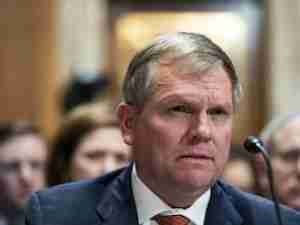Another winter storm is heading for the eastern and central U.S., threatening to bring snow to the Northeast and icy rain to southern states already enduring power outages amid a deep freeze.
Manhattan’s Central Park and Boston could get 6 to 8 inches (15 to 20 centimeters) of snow by early Friday, with Washington and Philadelphia getting 4 to 6, the National Weather Service said. Meanwhile, cold across the Great Plains and South will continue for several more days, and there will likely be icing from east Texas to Alabama.
A blast of frigid air has unleashed record-breaking cold from Canada to Mexico and triggered blackouts in Texas and across the South, leaving millions without power for days. For the second time this week, winter storm warnings, watches and weather advisories stretch from New Mexico to New England.
The wild week of winter weather has played havoc on air travel. Across the U.S. 4,948 flights were canceled Tuesday and Wednesday, according to FlightAware, an airline tracking service.
“Expect tomorrow to be difficult,” New York Mayor Bill de Blasio said Wednesday in a briefing. “Stay off the roads if you can, it’s going to hit at tomorrow morning’s rush hour.”
In New York, snow should start sometime early Thursday morning, said Joe Pollina, a weather service meteorologist in Upton, New York. The snow will be heavy through the day, but could change to sleet and freezing rain later. In Boston, snow will start late Thursday and continue through Saturday morning.
Messy Conditions
Similar conditions will sweep through Washington and the cities along Interstate 95 to the south of New York.
“It is going to be a mess for D.C., Baltimore and Philadelphia until Friday morning,” said Lara Pagano, a forecaster with the U.S. Weather Prediction Center.
Across eastern Texas, parts of Arkansas and through the South to Alabama, as much as a quarter-inch of ice could form on trees and power lines, causing outages and making travel hazardous, Pagano said. There is “good news on the horizon” for Texas and the rest of the central U.S. as temperatures gradually warm, she said. By next week, temperatures across Texas could rise above freezing and reach the 40s and 50s Fahrenheit.
Saturday’s high in Dallas could reach 45 degrees, while Houston and San Antonio could get to 55, the weather service said. As of 10:30 a.m., Seagull Lake, Minnesota posted the nation’s coldest temperature at minus 34 degrees. Three spots in Florida, including Fort Lauderdale, had highs of 87.
“It is still cold, obviously, across the central U.S. but not nearly as cold as it was yesterday at this time,” Pagano said. “Things look to improve in terms of warming up and drying out.”







